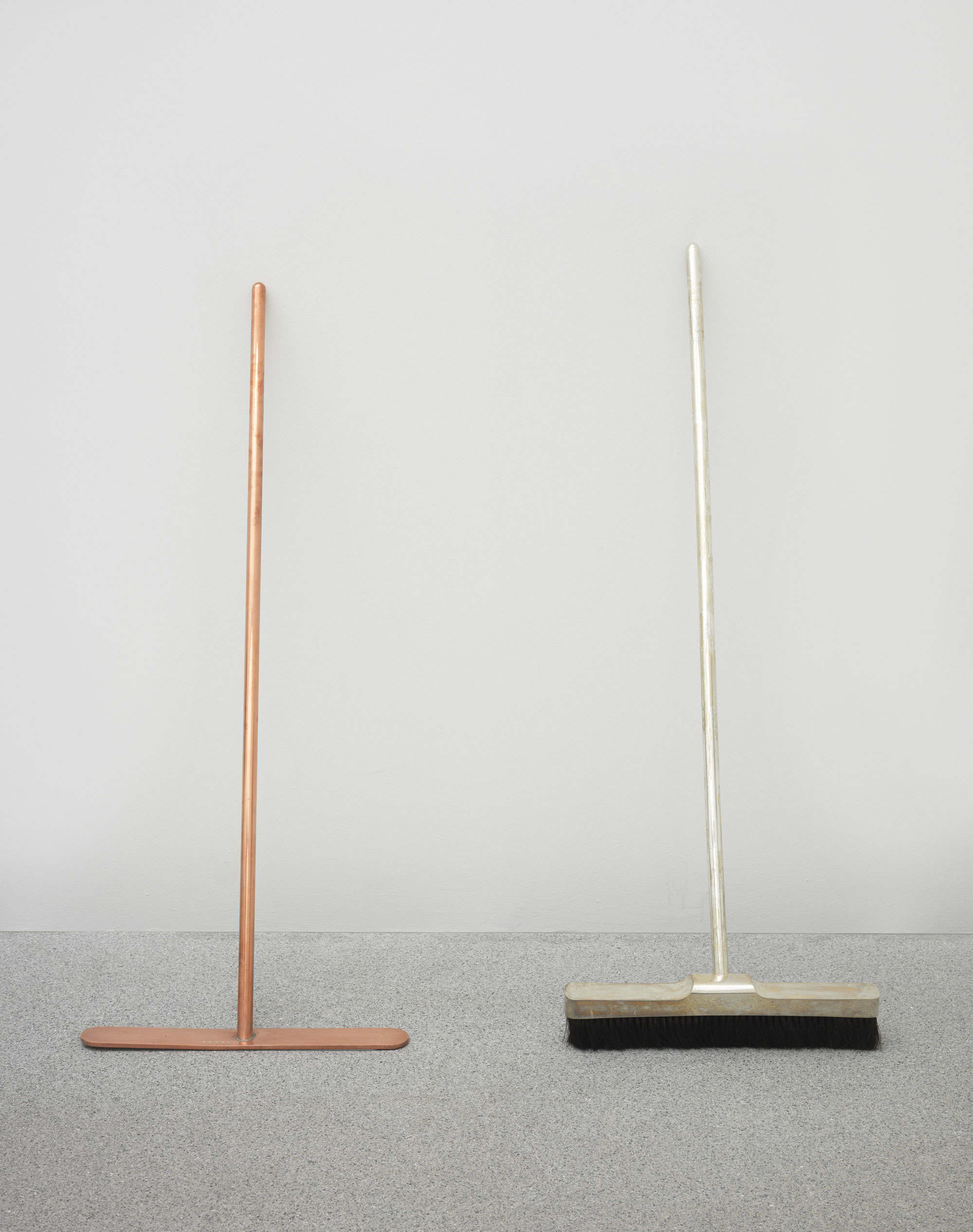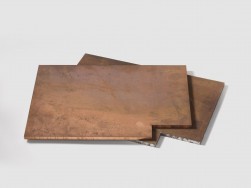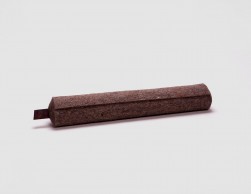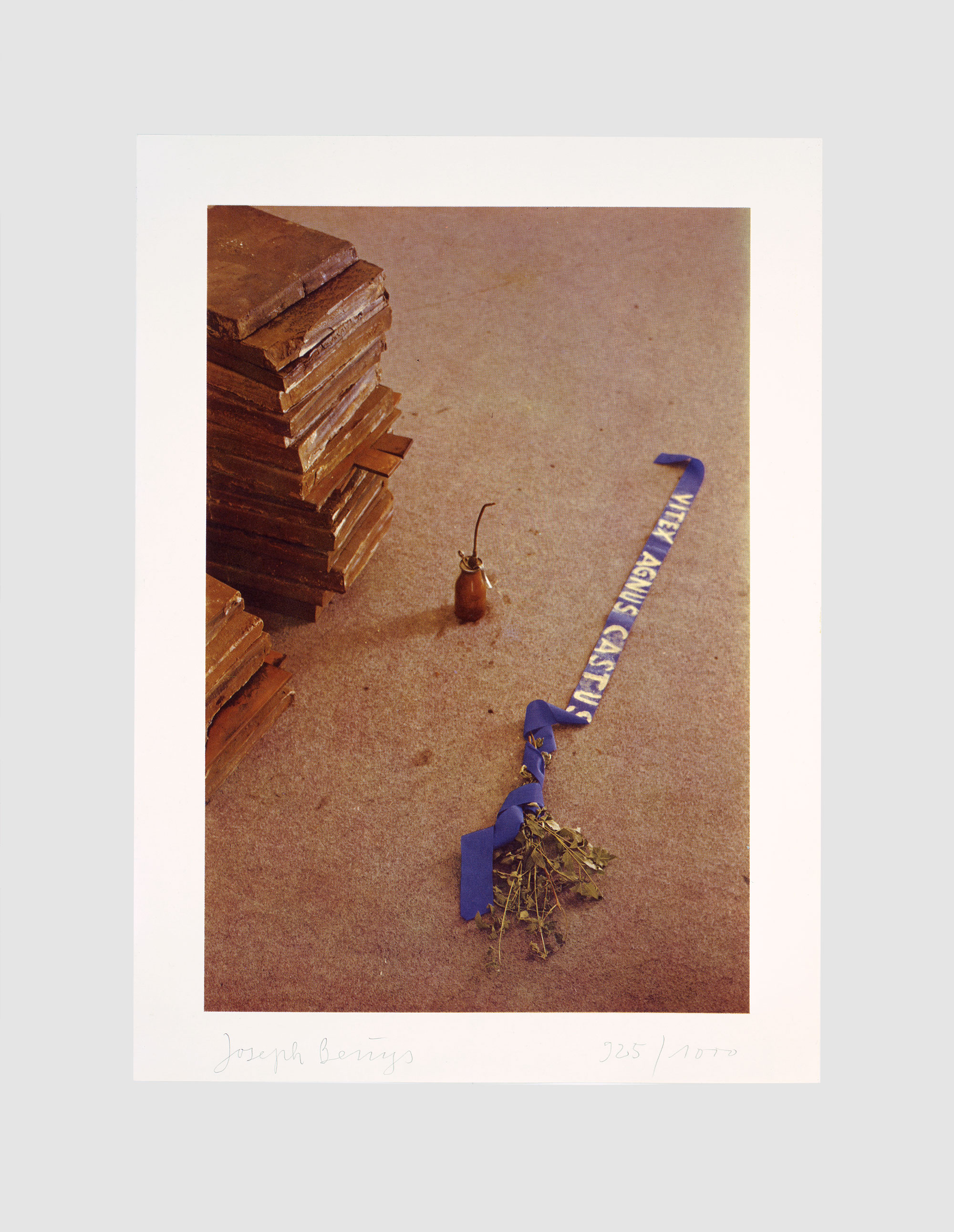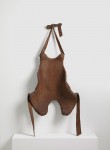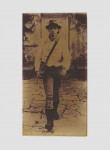Silver Broom and Broom without Bristles
[Silberbesen und Besen ohne Haare]
- 1972
- Broom (wood and horsehair), encased in 1 mm silver sheet, 139 x 51 cm
Solid copper and felt, 130 x 51 cm - Edition: 20 plus IV, ‘Joseph Beuys’ and numbering punch-stamped on silver broom
- Publisher: Edition René Block, Berlin
- Catalogue Raisonné No.: 62
In the early 1970s, Beuys began using brooms as instruments of symbolic cleansing. He did so for the first time in Düsseldorf in 1971, in a demonstration entitled Overcome the Party Dictatorship [Überwindet endlich die Parteiendiktatur]. Protesting the planned expansion of a tennis club, which would necessitate the felling of trees in a wood, Beuys and a group of students used brooms to clean the trails of the threatened woodland. The following year, Beuys used a broom with red bristles to clear away the rubbish left behind, in the wake of a May-Day demonstration by communist sympathisers. He was accompanied by two student helpers, who collected the rubbish and placed it in large plastic bags, which were themselves copies of a multiple called How the Dictatorship of the Parties can be Overcome [So kann die Parteiendiktatur überwunden werden]. This action was a critical examination of Marxism, as Beuys himself explained: ‘I wanted to make it clear that the demonstrators’ ideologically fixated orientation also has to be swept away, specifically what was propagated as the dictatorship of the proletariat.’1
The silver which coats the first of the brooms is a substance that has long been prized for its purifying capabilities, a connotation to which Beuys alluded periodically in his art. 2 This reference, together with the silver’s status as a precious metal, helps to distance this broom from its ordinary purpose, suggesting that it may possess a higher function. Such is undoubtedly the case with the broom made of copper, whose bristles have been replaced by a thin sheet of felt. Beuys often combined these two materials to form sculptural batteries, capable of storing and transmitting spiritual energies. While these devices typically consisted of large stacks of felt, surmounted by a copper plate, they could also appear in other guises, of which the broom without bristles is one example. Through its contact with the ground that lies beneath it, the felt can absorb the energies of the earth, a site which Beuys regarded as a locus of ‘underground spiritual forces.’3 These forces can be transmitted through the shaft of the broom to its user, strengthening her connection to the spiritual realm.
Götz Adriani, Winfried Konnertz and Karin Thomas, Joseph Beuys: Life and Works (New York, Barron’s, 1979), 292. ↩
As noted in Dierk Stemmler, ‘On the Multiples of Joseph Beuys,’ in Schellmann (ed.), Joseph Beuys: The Multiples (Munich, New York: Edition Schellmann, 1997), 516. ↩
For comments by Beuys on these energies, see, for example, Marianne Eigenheer and Martin Kunz (eds), Joseph Beuys: Spuren in Italien (Luzern: Staub, 1979), n.p.; and ‘Joseph Beuys im Gespräch mit Caroline Tisdall, 1974,’ in The Secret Block for a Secret Person in Ireland (Tübingen: Kunsthalle Tübingen, 1988), 48. ↩
© H. Koyupinar, Bayerische Staatsgemäldesammlungen
